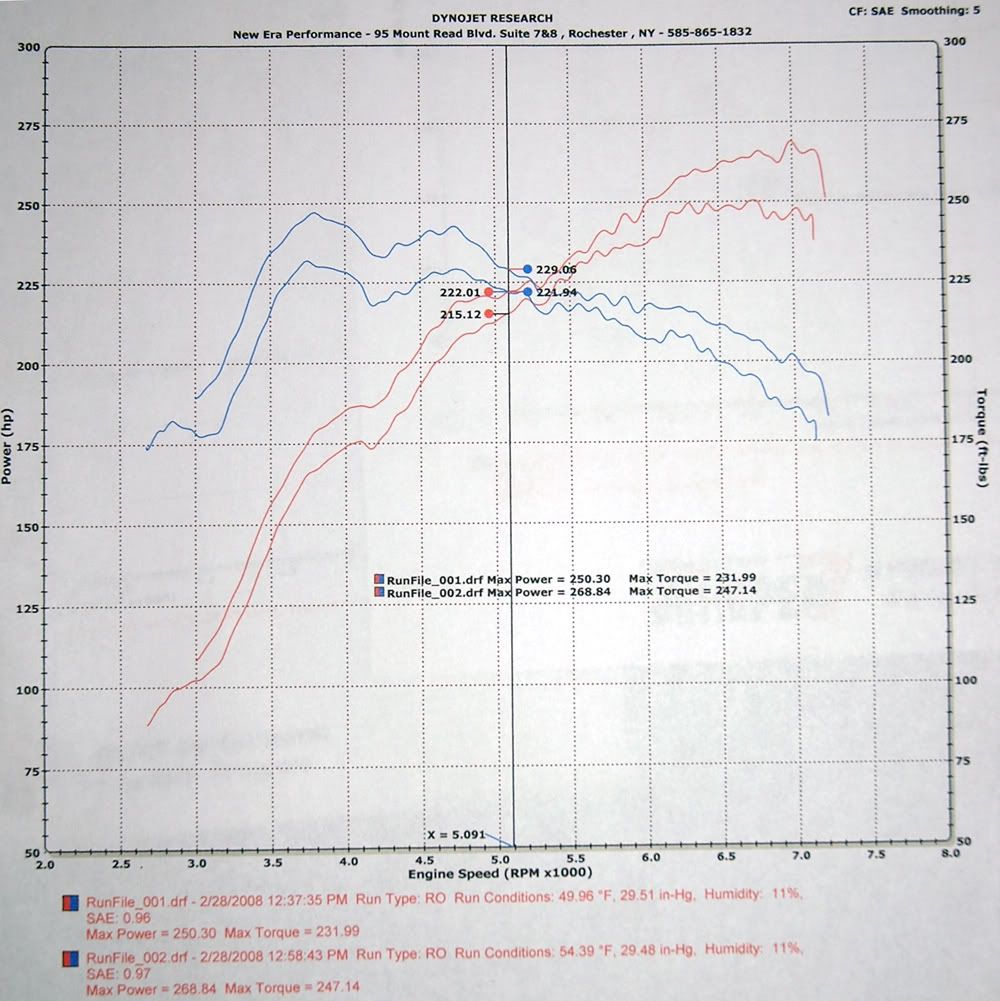As the owner of a 3.8L and a Dyno Dyanmics Chasis Dyno, I would like to post my dyno results, talk about it, and if you have your own dyno results, post them, we can see what goes wrong, what can be done to improve performance.<O </O
</O
<O </O
</O
All power numbers are WHEEL HP. <O </O
</O
<O </O
</O
The run was made @ Shootout mode, meaning that NO correction factor can be dialed. `As it is mode`.<O </O
</O
<O </O
</O
Just look at the right axle of the graph, and see that the air fuel ratios are between 10,8 to 12. <O </O
</O
<O </O
</O
Note that the intake temps are 41 celcius degrees, it was a hot summer day. Power results would be slightly better on a cooler day. As we see, the detailed dyno page shows intake temperatures, and air fuel ratios, and vacuum for all reference engine speeds.<O </O
</O
<O </O
</O
The vacuum column, far right column, indicates that the vacuum is increasing with the increasing revs. IDEALLY vacuum should be ZERO inches of mercury, if the intake system was ideal. On S38B38, at least on my M5, vacuum has increased to <?xml:namespace prefix = st1 ns = "urn:schemas-microsoft-com
![Image]()
1,0 inches</st1:metricconverter> of mercury from <st1:metricconverter w:st="on" ProductID="0,1 inches">0,1 inches</st1:metricconverter> of mercury. This shows that OEM M5 intake is restrictive. Once again, on an ideal engine, these vacuum readings should be close to ZERO at full throttle.<O </O
</O
By looking at the vacuum readings, S38B38 can make more power, if the intake system can be improved. It is very tough to improve the intake of S38, but can be done. <O </O
</O
<O </O
</O
Max power is attained at 12,8:1 air fuel ratios. This means, leaning the fuel will add more power.<O </O
</O
<O </O
</O
Power dips from 5500 rpm up to 6000 rpm, due to overfueling. Now, a ready on the shelf cannot cure this. This M5 needs to be custom tuned on the rolling road. <O </O
</O
<O </O
</O
The cats were on, stock muffler was on, stock air filter was on during this power run.<O </O
</O
<O </O
</O
Now, I have started a turbo project, and did not work on the software. But if I would change only the fuelling part, it would add approx 30 whp. <O </O
</O
<O </O
</O
<O
Other than reprogramming fuelling, ignition maps can be tuned to add more power, this entails high octane fuel. We can go into the igniton in the coming posts.
</O <O
<O </O
</O
Post yours and we talk about them, this is basically what chip tuning is.<O </O
</O
<O </O
</O
By the way, I am about to get the maps of the S38 software, so that I can edit the maps with the proper software, load it.<O </O
</O
<O </O
</O
I am trying to point out that any ready on the shelf chip, wont work well. All M5 or all automobiles must be custom programmed on a rolling road.
![Image]()
<O
All power numbers are WHEEL HP. <O
<O
The run was made @ Shootout mode, meaning that NO correction factor can be dialed. `As it is mode`.<O
<O
Just look at the right axle of the graph, and see that the air fuel ratios are between 10,8 to 12. <O
<O
Note that the intake temps are 41 celcius degrees, it was a hot summer day. Power results would be slightly better on a cooler day. As we see, the detailed dyno page shows intake temperatures, and air fuel ratios, and vacuum for all reference engine speeds.<O
<O
The vacuum column, far right column, indicates that the vacuum is increasing with the increasing revs. IDEALLY vacuum should be ZERO inches of mercury, if the intake system was ideal. On S38B38, at least on my M5, vacuum has increased to <?xml:namespace prefix = st1 ns = "urn:schemas-microsoft-com
By looking at the vacuum readings, S38B38 can make more power, if the intake system can be improved. It is very tough to improve the intake of S38, but can be done. <O
<O
Max power is attained at 12,8:1 air fuel ratios. This means, leaning the fuel will add more power.<O
<O
Power dips from 5500 rpm up to 6000 rpm, due to overfueling. Now, a ready on the shelf cannot cure this. This M5 needs to be custom tuned on the rolling road. <O
<O
The cats were on, stock muffler was on, stock air filter was on during this power run.<O
<O
Now, I have started a turbo project, and did not work on the software. But if I would change only the fuelling part, it would add approx 30 whp. <O
<O
<O
Other than reprogramming fuelling, ignition maps can be tuned to add more power, this entails high octane fuel. We can go into the igniton in the coming posts.
</O
Post yours and we talk about them, this is basically what chip tuning is.<O
<O
By the way, I am about to get the maps of the S38 software, so that I can edit the maps with the proper software, load it.<O
<O
I am trying to point out that any ready on the shelf chip, wont work well. All M5 or all automobiles must be custom programmed on a rolling road.













